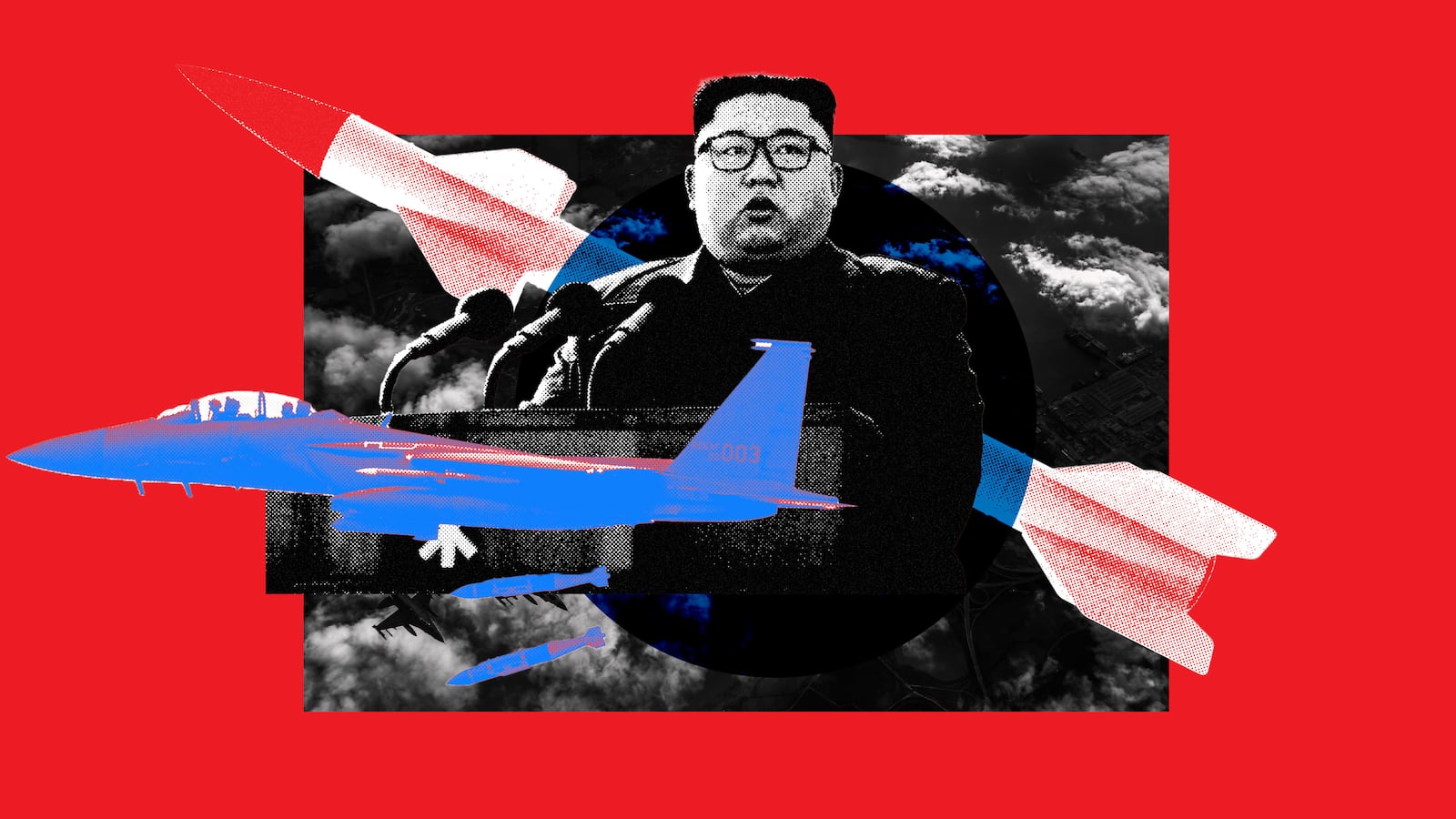North Korea has test-fired a missile on its longest flight ever over Japan, inspiring the U.S. and South Korea to stage their own show of force with precision strikes on an islet in the Yellow Sea near North Korea’s southwest coast.
The tit-for-tat exchange ratcheted up a sense of crisis in which North Korea’s leader Kim Jong Un is defying threats by both Washington and Seoul to punish him while he makes good on his vow never to give up his nuclear program, sanctified in a newly passed law authorizing the North to nuke its enemies whenever Kim feels like it.
The latest missile, the 39th the North has test-fired this year and the strongest since January, sent northern Japan into a panic, soaring 600 miles high over the large northern Japanese island of Hokkaido before landing in the northern Pacific 2,600 miles from its launch site near the North’s border with China.
Japanese authorities ordered a “J-Alert,” schoolchildren huddled by their desks and people swarmed to shelters. It was the first time that Japan had taken such precautions since the North fired two similar intermediate-range missiles five years ago above a populace that feels vulnerable to North Korean attack in view of historic animosities.
South Korea’s conservative President Yoon Suk-yeol, pursuing an increasingly hard line toward North Korea, was just as incensed. “Such reckless nuclear provocations,” he promised, “will be met with a resolute response from our military and our allies.” The White House came out with its own ritualistic condemnations, promising to live up to its “ironclad commitments” to its Korean and Japanese allies.
How much such rhetorical flourishes really mean was far from clear. Daniel Kritenbrink, assistant secretary of state for East Asia and the Pacific, in a zoom forum right after the launch warned America would “take steps to deter North Korean provocative power,” vowing “we will deter the growing threat of North Korea’s nuclear and missile program.”
The Americans and South Koreans seemed to be holding their breath, waiting to see if Kim would order the North’s seventh nuclear test—its first since September 2017. Another nuclear test, said Kritenbrink, would “be dangerous and deeply destabilizing to the region.”
At the forum, staged by ICAS, the Institute for Corean-American Studies, Kritenbrink avoided a straight answer when The Daily Beast asked whether the U.S. and South Korea might go beyond rhetoric and attack North Korean nuclear facilities and missile launch sites.
“My intention is not to announce a new approach nor to make a threat,” he said. “I am not going to address a hypothetical situation.” He did say that no one “should doubt our resolve in pursuing sanctions and other authority,” vowing “to respond resolutely.”
Just what the hell such talk means, however, was far from clear.
Kritenbrink acknowledged both China and Russia had vetoed such measures in the UN Security Council. Both “need to do more,” he said, but that won’t happen while Kim Jong Un strongly supports Russia’s invasion of Ukraine and China’s claims to Taiwan.
Under the circumstances, the most visible evidence of American and South Korean resolve was what the South Korean command called “joint direct attack munition” bombing by four American F-16’s and four South Korean F-15K’s on “precision targets” on a tiny uninhabited outcropping named Jikdo. The islet, often used as a firing range, belongs to South Korea even though it’s closer to North Korea.
The South Korean command said South Korea and the U.S. had thereby “demonstrated their will to respond sternly to any Northern threats as well as their capabilities to conduct a precision strike at the origin of provocations.”
Was the bombing a warning of what the Americans and South Koreans might do if Kim Jong Un escalates the testing?
“Attacking North Korea’s launch facilities would be an act of war,” said Evans Revere, a former senior American diplomat in Seoul. “It's hard to imagine the United States taking such a step unless there was solid evidence indicating that the DPRK (Democratic People’s Republic of Korea) was about to carry out an attack on the United States, one of our bases, or one of our allies.”
Meanwhile, said Revere, it’s “time for the U.S. and its allies to adopt a more aggressive posture towards the DPRK.” One idea would be for Tokyo and Washington to declare “any North Korean missile launched in the direction of Japan as a likely danger to Japan’s security” and “intercept and destroy future launches, depending on their assessment of the threat posed by the launch.”
In fact, the intermediate ballistic missile launched Tuesday could easily carry a nuclear warhead to U.S. bases in Hawaii and Guam, and a long-range missile could hit anywhere in North America.
“We have to be crystal clear about the growing nature of this threat,” said Kritenbrink, maintaining the U.S. and South Korea “have resumed our extended deterrence dialog” while adopting “a calibrated approach” toward North Korea.
For all the diplo-speak, however, all that’s really clear is that Kim is going to live up to his vow never to give up his nukes—and claim the right to fire one for real if threatened by his enemies, notably the U.S., Japan and South Korea. What’s not at all clear is what the U.S. will do about it.
Bruce Bennett, long-time Korean analyst at the RAND Corporation, summarized what he sees as the American position: “Strategic ambiguity rather than strategic clarity dominate our approach.”






